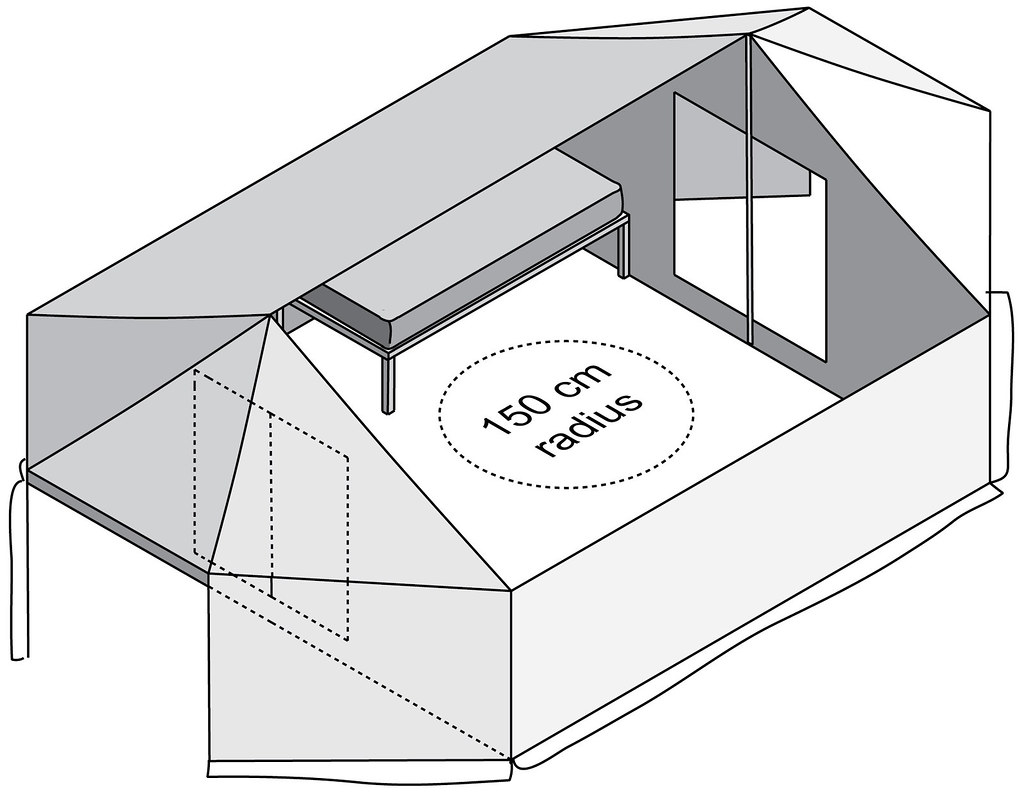All Under One Roof
3.1 Shelter kits and other emergency household items
An immediate shelter and settlements response is characterised by distribution of emergency items to cover basic needs, including shelter kits and household items. Although these items are a quick way to provide support to those in need, there are challenges when it comes to accessibility and privacy. Items distributed can also be unsuitable or difficult to use for people with disabilities.
The following recommendations primarily address emergency needs at the shelter level. Consider whether the items provided could also contribute to addressing barriers at the community level. One practical example is making distribution sites and distribution activities inclusive. Another is considering if training activities could be used to improve the accessibility of public facilities.
| 3.1.1 | Assess the accessibility of all parts of a distribution process from start to finish, taking into account safety issues along with the appropriateness and usability of items being distributed and the communication methods used. | |
Making distribution activities inclusive
For more information about inclusive distributions, refer to the Good Distribution Handbook. |
||
| 3.1.2 | Review existing technical documentation that accompanies distributed items and make sure that guidelines and information on safe shelter repair are available in multiple accessible formats (oral, print, sign language, easy-to-read/plain language, etc). | |
| Packaging can carry simple diagrams illustrating how any distributed items can be used safely to repair or construct safe and adequate shelter. | ||
| 3.1.3 | Provide support with transportation of tools and construction materials, for example through additional cash grants, home delivery or community support groups. | |
| 3.1.4 | Offer technical assistance on site, and prioritise households of persons with disabilities in order to promote safe and accessible construction practices, both when erecting emergency shelters and tents. This includes avoiding barriers such as steps or thresholds at the entrance. | |
| 3.1.5 | Provide additional material and technical support depending on individual accessibility needs, such as small, movable ramps. Basic materials such as ropes and wooden poles can be used for makeshift handles or railings. Additional shelter support for persons with disabilities may include household items such as bed frames and mattresses, or assistance with maintenance and winterisation. | |
| Persons with disabilities who spend a significant amount of time indoors should be prioritised when it comes to monitoring and improving thermal comfort, natural light and ventilation. Additional items such as blankets can be vital. [include simple, easy to implement solutions/case studies here] |
||
| 3.1.6 | Structural poles are often not included in shelter kits. Consider whether these can be included as part of the assistance package, or if they can be supplied by the household. Assess the availability of local materials that could be uses as structural poles, such as timber or bamboo, and make sure that persons with disabilities can obtain the necessary material for construction. | |
| 3.1.7 | Offer partition mats or additional tarpaulin sheets to protect the privacy of persons with disabilities who are housebound or use the shelter for personal hygiene. If the shelter is too small to allow persons with disabilities privacy inside, consider the possibilities for extension. | |
 |
 |
|
Tents are used in many contexts as a temporary shelter solution for displaced people. Below are some specific considerations for tent accessibility:
|
||
 |
 |
|
